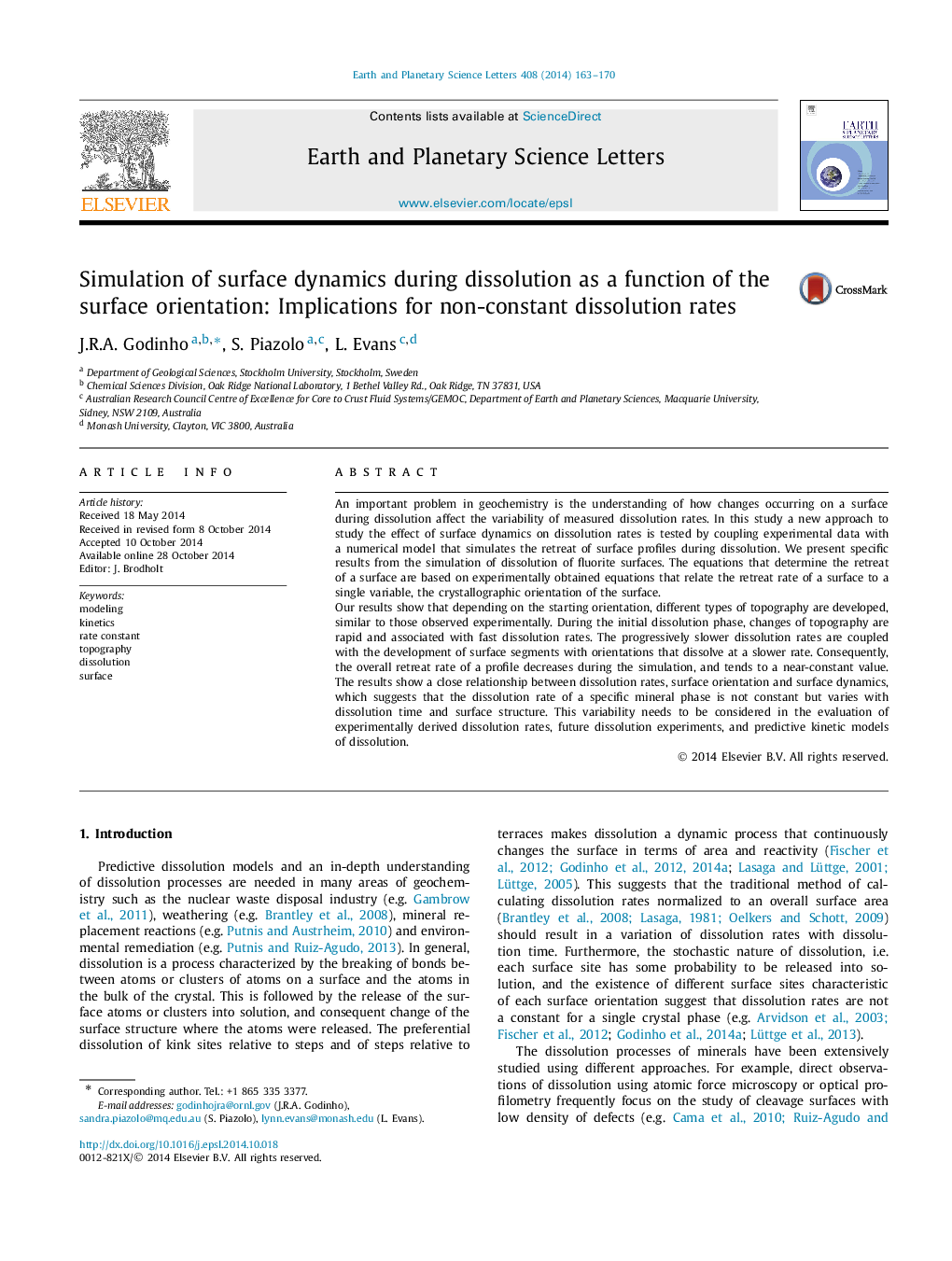| کد مقاله | کد نشریه | سال انتشار | مقاله انگلیسی | نسخه تمام متن |
|---|---|---|---|---|
| 6428692 | 1634748 | 2014 | 8 صفحه PDF | دانلود رایگان |
- Changes of topography and dissolution rate were simulated during dissolution.
- A surface tends to reduce its surface energy by dissolution of atomic steps.
- Dissolution rates of unstable surfaces should not be normalized to surface area.
- The dissolution rate of a mineral depends on surface orientation and topography.
An important problem in geochemistry is the understanding of how changes occurring on a surface during dissolution affect the variability of measured dissolution rates. In this study a new approach to study the effect of surface dynamics on dissolution rates is tested by coupling experimental data with a numerical model that simulates the retreat of surface profiles during dissolution. We present specific results from the simulation of dissolution of fluorite surfaces. The equations that determine the retreat of a surface are based on experimentally obtained equations that relate the retreat rate of a surface to a single variable, the crystallographic orientation of the surface.Our results show that depending on the starting orientation, different types of topography are developed, similar to those observed experimentally. During the initial dissolution phase, changes of topography are rapid and associated with fast dissolution rates. The progressively slower dissolution rates are coupled with the development of surface segments with orientations that dissolve at a slower rate. Consequently, the overall retreat rate of a profile decreases during the simulation, and tends to a near-constant value. The results show a close relationship between dissolution rates, surface orientation and surface dynamics, which suggests that the dissolution rate of a specific mineral phase is not constant but varies with dissolution time and surface structure. This variability needs to be considered in the evaluation of experimentally derived dissolution rates, future dissolution experiments, and predictive kinetic models of dissolution.
Journal: Earth and Planetary Science Letters - Volume 408, 15 December 2014, Pages 163-170
